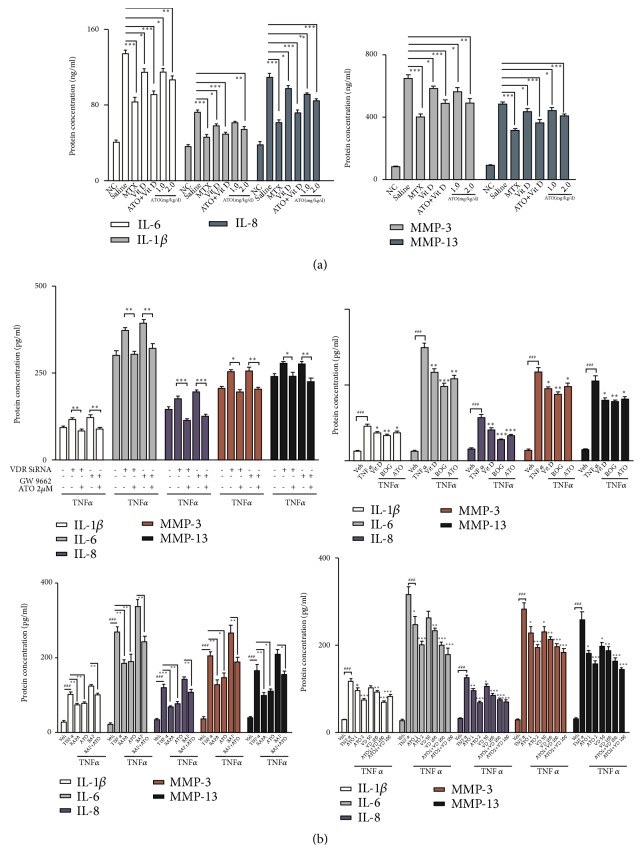Figure 4.
Arsenic trioxide (ATO) suppresses the release of key inflammatory and catabolic cytokines in rheumatoid arthritis (RA). (a) Inflammation module representatives including interleukin-6 (IL-6), IL-1β, and IL-8 and catabolism module representatives including matrix metalloproteinase-3 (MMP-3) and MMP-13 decreased in mice serum after the administration of ATO compared with collagen-induced arthritis- (CIA-) saline, whereas they significantly increased in CIA-saline mice compared to normal controls (NC), as shown by enzyme-linked immunosorbent assays (ELISA) (n=6; ∗p<0.05; ∗∗p<0.01; ∗∗∗p<0.001). (b) The administration of 2.0 μM ATO significantly decreased the expression of inflammation module representatives and catabolism module representatives induced by tumor necrosis factor--α (TNF-α) (50 ng/mL) or by silencing the Vitamin D receptor (VDR) by small interfering RNA (siRNA) and inhibiting PPAR-γ with GW9662 (n=3, #p<0.05; ##p<0.01; ###p<0.001, vehicle versus TNF; ∗p < 0.05; ∗∗p<0.01; ∗∗∗p<0.001, experiment versus TNF. Vehicle = RA fibroblast-like synoviocytes (FLS) with medium; TNF = RA FLS with TNF-α treatment alone). In addition, these cytokines were downregulated by rapamycin and upregulated by BafA1 but this was reversible by ATO (n=3, ∗∗p< 0.05; ∗∗p<0.01; ∗∗∗p<0.001). ATO had synergistic effects with Vit D in downregulating the expression of IMRs and CMRs (n=3, #p<0.05; ##p<0.01; ###p<0.001, vehicle versus TNF; ∗p<0.05; ∗∗p<0.01; ∗∗∗p <0.001, experiment versus TNF).

